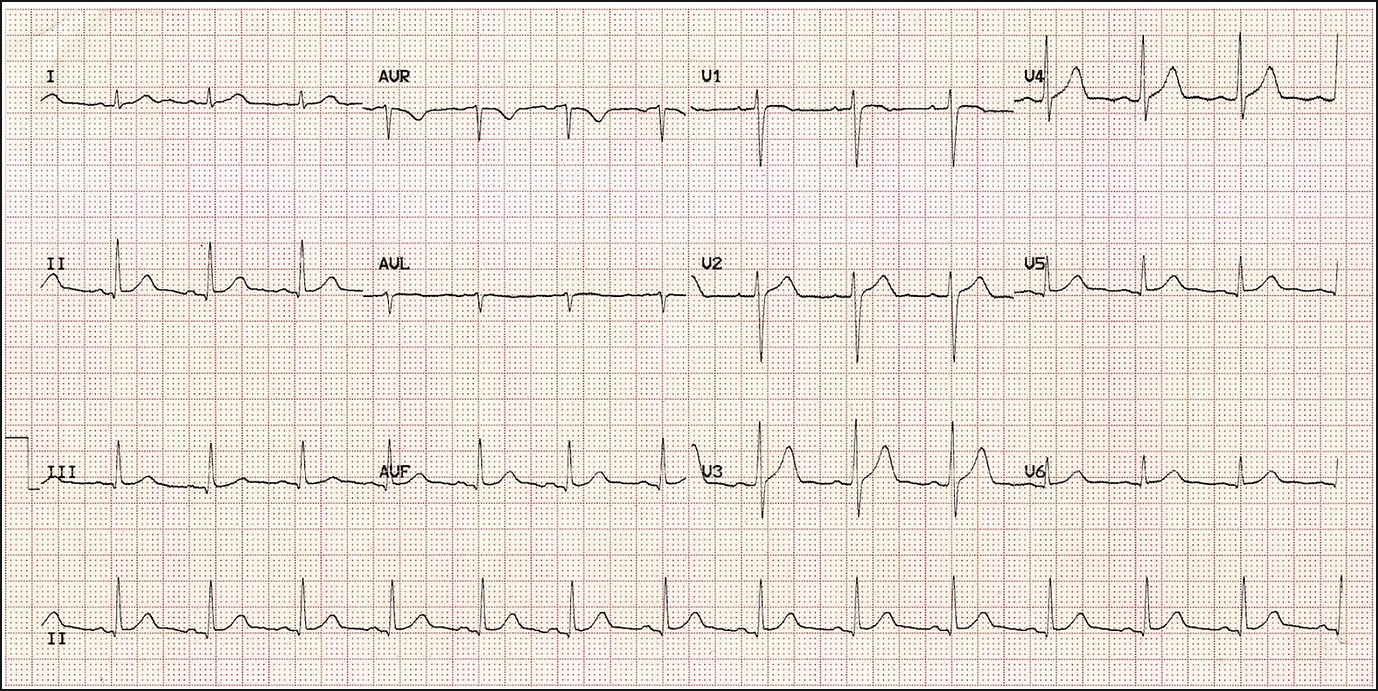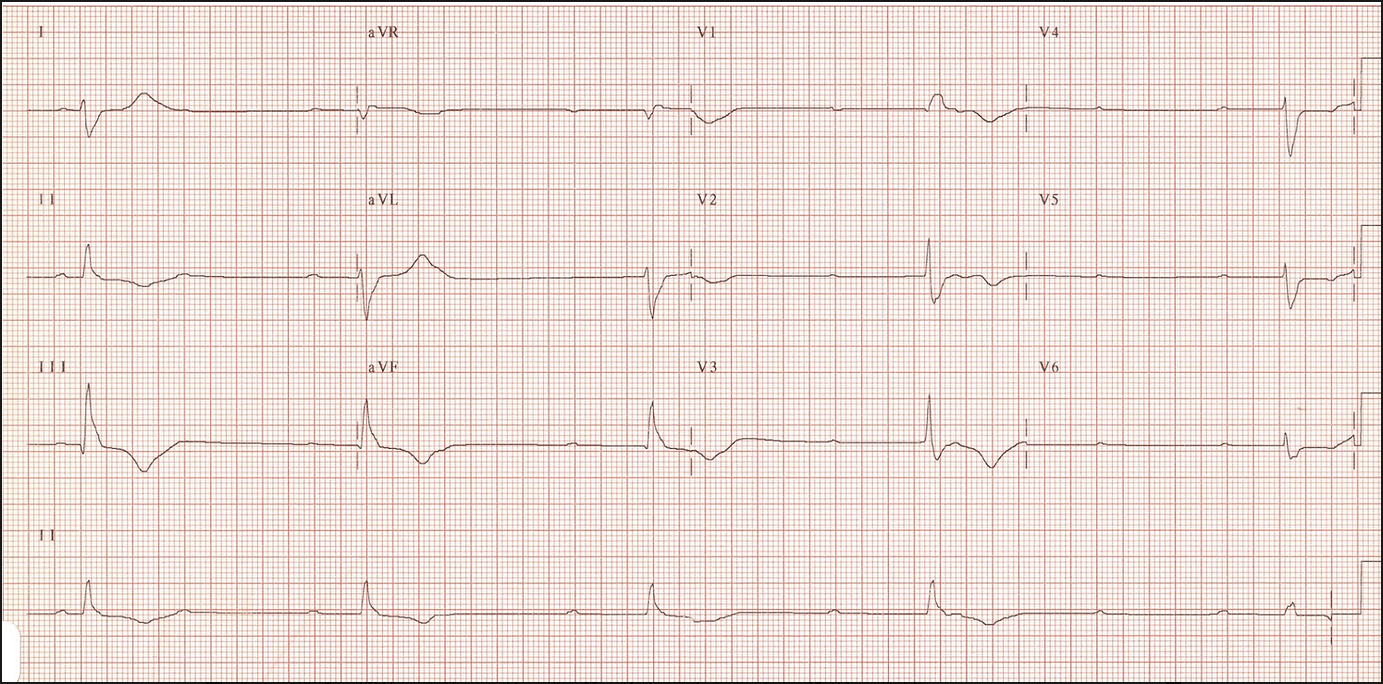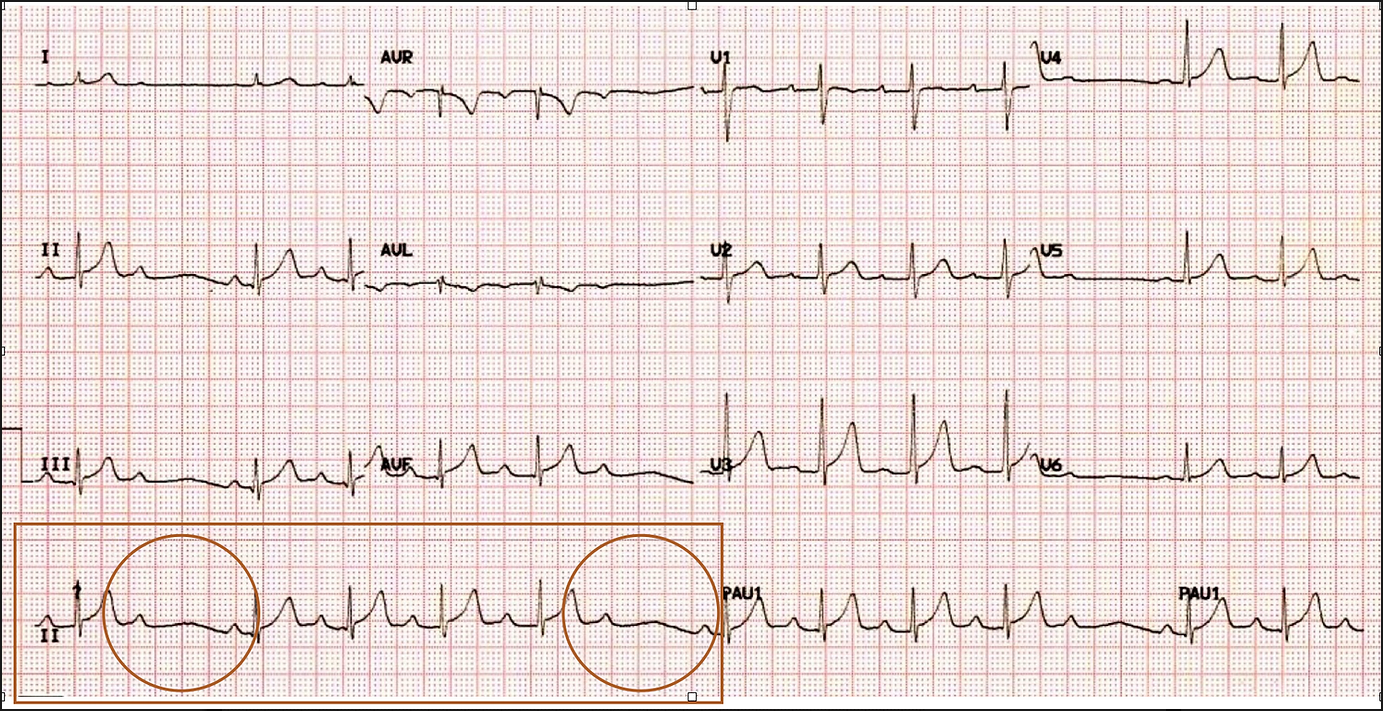Relationship Between P-wave and QRS?
It's important to check that there is a P-wave for every QRS complex and that there is a QRS complex for every P-wave.
By doing this you can see if there are any extra beats or dropped beats.

Sinus Rhythm
Here there is a normal 1:1 relationship between the P-waves and QRS

QRS and P-Waves Don't Match Up
This is an example of 3rd degree heart block or complete heart block as it is known.
The signal from the SAN can't reach the ventricles and the ventricles only contract by the spontaneous depolarisation of the AV node.
This means that the p-waves and QRS complexes don't match up because the p-wave isn't initiating the QRS like normal

Dropped QRS
This is an example of what's known as Wenkebach phenomenon where the PR interval gradually increases with every beat until eventually there is a P-wave which isn't conducted through to the ventricles and the QRS complex never occurs.
(The orange circles in the diagram show where the dropped QRS complex occurs)
